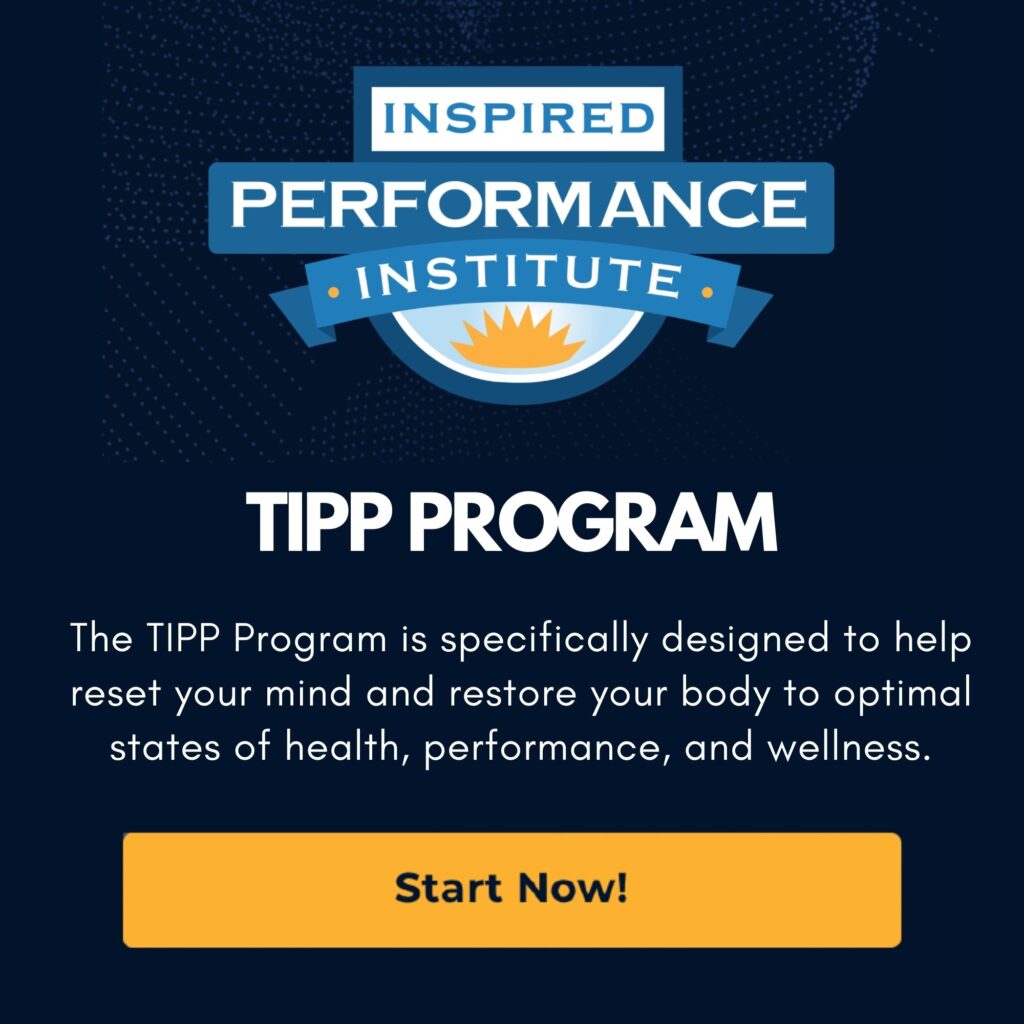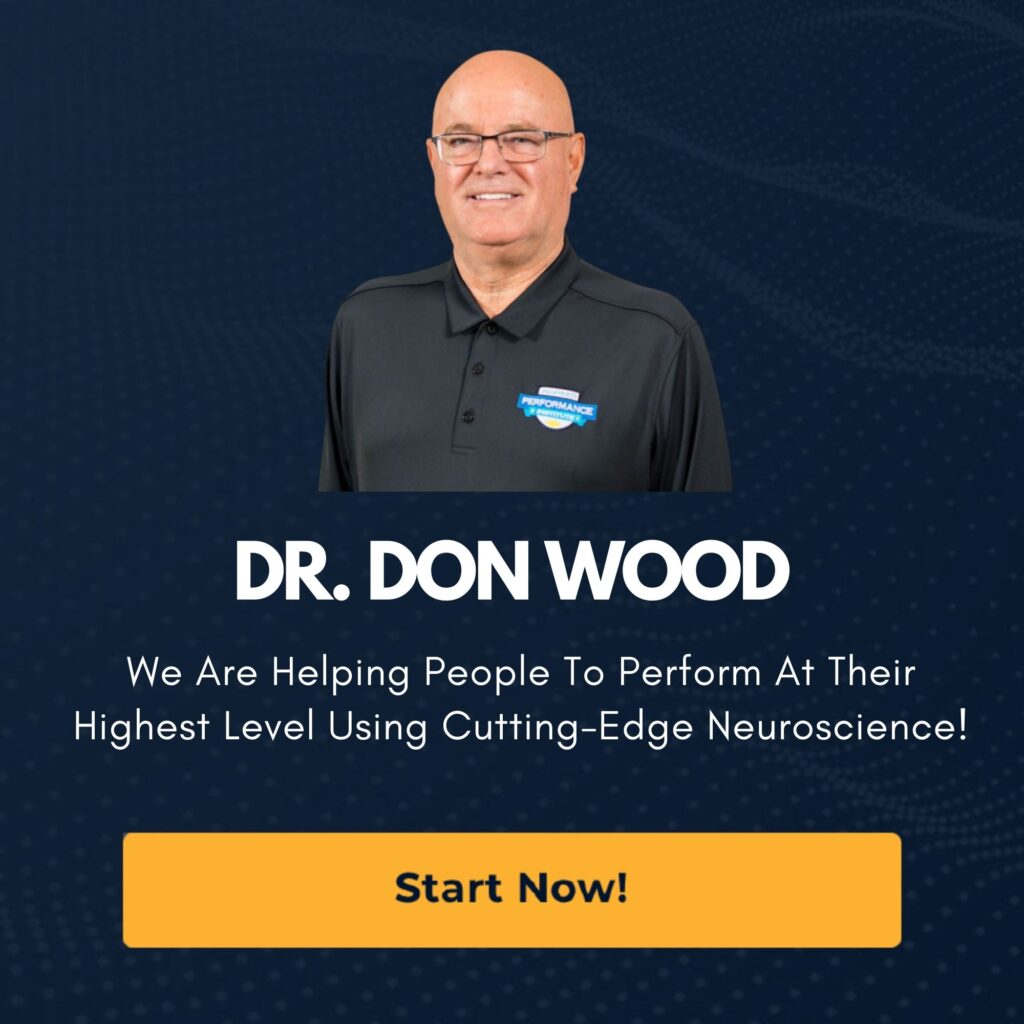We all know how uncomfortable pain can be, whether that pain is emotional or physical.
What is the point of pain?
Pain is a message and it’s a pretty strong motivator to try to get you to do something different, to make a change.
For example, if your knee is hurting when you walk, what is your mind trying to get you to do? It’s trying to get you to stop putting pressure on that knee. That’s why we’ll limp, because when you’re walking and you don’t want to put pressure on the hurting leg, you tend to lift off that pressure and you put more pressure on the other leg, giving your hurting leg some time to heal.
And that’s the purpose of pain. It’s a message designed to make us do something differently.
Now, pain can create habits and behaviors, especially emotional pain or pain rooted in previous trauma.
How Pain Creates Habits and Behaviors
If you have a lot of emotional pain coming from previous experiences, traumatic experiences, or maybe even the emotional concussions that I often talk about, those small T traumas, will create habits and behaviors.
As I explain in my book “Emotional concussions”, emotional concussions refer to seemingly minor events that leave a lasting impact on one’s emotional well-being. These could include a coach questioning your abilities, a teacher criticizing you in front of others or growing up with an overly critical parent.
The accumulation of emotional concussions over time can lead to symptoms such as procrastination, chronic worrying, a fear of change, complacency, micromanagement, the tendency to blame others, and so much more.
Traumas, emotional concussions, and the pain rooted in trauma all play a part in shaping our habits and behaviors. Think of these behaviors as a code—your mind’s way of sidestepping pain.
Our brains are incredibly savvy; they’re always learning and figuring out ways to make life easier by automating things. This automation results in habits that we don’t even have to think about.
The pain-avoidance code is like a quick-response system; it’s there to make sure you react automatically when faced with the familiar pain. No need to waste time pondering how to deal with it; your brain’s got it covered in a heartbeat.
Now, why does this code thing happen? Well, your brain loves efficiency, and repetition is its cue. When you keep doing or thinking something over and over, it sends a signal to your brain that says, “Hey, this must be important—I wouldn’t be doing it all the time otherwise.” In response, your brain takes over and turns it into a code, like a program you can run without even thinking about it.
Essentially, anything you repeat becomes a part of this mental programming. Your subconscious takes the reins, making it an automatic response, so you don’t have to deal with conscious decision-making every time. It’s like your brain’s way of saying, “I’ve got this, no need for you to stress over it.”
Think You’re Self-Sabotaging? Think again.
Your mind may create a code to keep you out of pain, and yet sometimes that could look like it created more pain.
The purpose of that code was to eliminate the opportunity for the pain to happen again. Now, this may create another pain message and people will interpret that as self-sabotage.
However, it’s not possible for your mind to sabotage itself; it’s survival-based.
Your mind is going to do whatever it can to get you away from the pain it has already experienced. Sometimes that may create a new pain.
I worked with a guy who excelled in the stock business and trading. Interestingly, as he reached the final stretch of the year—October, November, December— he told me that he just shut down.
He didn’t know why, but he lost all motivation even though he started the year very motivated, did very well, and made a lot of money.
“By the time I got to the fourth quarter,” he said, “I just felt like I was exhausted. I didn’t have any motivation. I would make excuses not to go to work. I would say, I need a break. I’m burnt out. Whatever excuse I could come up with”
He experienced a sense of guilt because his two partners heavily relied on him, and he felt he was letting them down during the crucial fourth quarter. However, his partners were quite understanding and patient with him. They supported his need for golf breaks and vacations, acknowledging that he required time for himself. This made him reflect on the underlying cause—was it a physical, mental, or emotional challenge triggering this pattern?
As we reviewed his previous experiences, we uncovered a crucial piece of the puzzle: his father was his hero, his mentor, and a very successful businessman as well. However, his father went bankrupt four times and he says, “I remember that we would be flying in private jets, and then in the middle of the night moving because we were being foreclosed on”.
Despite his father’s impressive success, the memory of abrupt changes from flying in private jets to sudden midnight moves due to foreclosure lingered. It dawned on us that, given the significant influence his father had on him, his mind was instinctively shutting down in the fourth quarter to safeguard the hard work accomplished earlier in the year. It was a protective mechanism, not self-sabotage.
Understanding the root cause was the game-changer. Once he was aware of the possibility that his mind was trying to shield him from potential loss, he realized it wasn’t self-sabotage, as he initially thought. Armed with this awareness, he could now address the underlying issue.
The uplifting news came on December 15th when he messaged me, celebrating his best year ever as he successfully overrode the old code with a new one through conscious repetition of the better, healthier thinking patterns.
The pain message is extremely powerful. Your mind wants to do everything it can to protect you from ANY pain.
Consider this example: How often do we hear about someone ending up in prison after confessing to a crime they didn’t commit? It’s a more common occurrence than one might think.
Often, the police are driven by a genuine desire to do their job, aiming to secure a confession if they believe someone is guilty. (Granted, there are instances where some law enforcement officials may not be entirely honest and are merely seeking a confession regardless. For the sake of discussion, let’s assume the police are genuinely motivated by the right reasons and are putting a lot of pressure on a suspect in an attempt to get a confession.)
Now, picture this: the suspect, under constant pressure, deprived of rest, and isolated without the opportunity to communicate with anyone. If this person has a history of trauma or significant pain, their threshold for enduring further pain may be quite low. In such a situation, the relentless pressure can lead these suspects to confess to a crime they never committed. To many, it may seem perplexing—why confess to a crime that could result in a life sentence or worse?!
The answer lies in their desperate desire to escape the immediate pain, even if it means facing severe consequences later on. They just want to be out of pain.
Now, when did they want to be out of pain? Now. Instantly.
You see, your subconscious operates in the present. Everything for your subconscious is NOW. It doesn’t have any concept of time. Your survival brain is always looking out for you NOW. So if it has no concept of time, can it see a consequence to making that confession? No, the confession is going to stop the pain. When is it going to stop the pain? Now. As soon as they sign the confession, the interrogation stops, the pressure stops, and the pain stops.
At the Inspire Performance Institute we do a lot of work with the Innocence Project. The Innocence Project is a group of attorneys that represent people they believe were wrongfully incarcerated and work on getting them free. They “ work to free the innocent, prevent wrongful convictions, and create fair, compassionate, and equitable systems of justice for everyone.”
In quite a few of those cases, people admitted to and confessed to crimes they didn’t commit. It may sound strange, but when you sit down and talk to them, they’ll tell you about the sheer agony of being in that intense interrogation. All they wanted is for that pain to stop. Once they confessed, the pain ended, and from their perspective, the problem was solved.
The pain of the interrogation overshadowed the potential consequences of a false confession, highlighting the desperate lengths people may go to escape the immediate pain.
Addiction Is a Code – Not a Disease
That is also why addiction occurs: addiction occurs because it’s a way to stop the pain. And when does it stop the pain? Instantly! Problem solved.
Unfortunately, new problems and pain were created.
If the alcohol, drugs or whatever you used worked temporarily at that moment, what will you do? You’re going to do it again, and again, and again. The brain has learned a way to stop the pain and it solves the pain immediately – and it’s going to turn it into a code.
Addiction is a code, it’s not a disease.
We tend to criticize people struggling with addiction, attributing it to a quest for a dopamine rush or just trying to get high. But from what I’ve discovered, addiction isn’t simply about character, morals, willpower, or ethics—it all boils down to pain.
Many people dealing with addiction have faced significant trauma in their lives. The trauma loop keeps playing in their minds, and they’ve found a way, although temporarily, to stop that relentless loop.
People often question, “Why would someone turn to drugs and alcohol despite knowing the consequences?” The simple answer is that it works. And what they’re looking for is a solution that works. It becomes a solution to break free from the grips of the trauma loop they’re stuck in. It’s not about seeking a high for the sake of it; it’s about finding something that provides relief from the persistent pain they’re facing.
Imagine we’re shaking hands, and out of nowhere, I start squeezing tighter and tighter until it becomes genuinely painful. You’re looking at me, puzzled, wondering why on earth I’m squeezing so hard. I persist, escalating the pressure to the point where it brings you to your knees. The pain is intense, and you’re feeling helpless. Then, I make an offer: if you take a drink or a drug, I’ll let go. Would you agree to it? Absolutely, yes. Because when you’re in that kind of pain, the immediate instinct is to find a way out.
It’s not about wanting the substance for its own sake; it’s about seeking relief from the pain in that moment. It’s a tough situation, and it makes perfect sense why someone would choose that path to escape the pain they’re experiencing.
When I finally let go of that painfully tight handshake, yes, there’s a rush of dopamine. After all, dopamine is the brain’s way of saying, “Good job, you did something that resulted in a reward.” You got the pain to stop by taking the drug or taking the drink, but was that your motivator?
The motivation behind taking that drink or drug wasn’t primarily about chasing a dopamine high. The true driving force was to put an end to the pain.
Critics often point fingers at people dealing with addiction, accusing them of being irresponsible thrill-seekers, looking for a high. But from my experience, it’s not that simple. In most cases, those in the throes of addiction are not pursuing substances for the sake of getting high. It’s about silencing the relentless pain that has become a constant in their lives. The focus is on alleviating that pain, not on seeking a euphoric high.
You Fear Pain More Than You Fear Death
I read an interesting story about a German sniper during World War II facing relentless waves of Russian soldiers charging their lines. The Russians, lacking sufficient weapons, adopted a strategy of sending anyone with a weapon charging toward the German lines. Although they didn’t have a lot of weapons, they had a lot of people.
The sniper’s task was to shoot and kill them. However, the sheer numbers meant a continuous onslaught, wave after wave. As one soldier would fall, another Russian would run, pick up the weapon and continue to charge and move towards German lines.
In a surprising twist, the sniper found a more effective way to stop the Russians from charging. Instead of shooting to kill, he aimed for their stomachs. As it turns out, being shot in the stomach is excruciatingly painful, assuming it doesn’t lead to immediate death.
The aftermath on the battlefield was haunting – injured Russians screaming in pain.
This created a significant deterrent because the next Russian, witnessing the agony of their comrades, became less motivated to pick up a weapon and charge. They wanted to avoid the pain. Death wasn’t as scary – there is no pain in death. The prospect of enduring prolonged, intense pain looked much worse than the risk of a swift death, and it was a bigger motivator to stop them from running.
When people approach me wanting to quit smoking, my first question is always, “Why are you smoking?”. The common response is often centered around nicotine addiction, with some even claiming that nicotine is tougher to kick than heroin. I then dive deeper, asking whether they’re aware of the underlying reasons for smoking—whether it’s linked to trauma or pain, and if smoking provides a sense of relief.
Many share that they initially picked up smoking due to peer pressure or to appear cool, but over time, it became a habitual repetition. As I emphasize, habits and behaviors are essentially codes—they’ve coded a way to feel better through smoking.
However, I challenge the belief that they’re addicted to nicotine. Instead, I explain the science behind it. Nicotine shares a remarkably similar chemical makeup with a neurotransmitter in the body called acetylcholine. This neurotransmitter acts as a precursor to the release of dopamine, the feel-good neurotransmitter. When nicotine enters the bloodstream and reaches the brain receptors within seconds, the brain, thinking it’s acetylcholine, releases dopamine. So, what they’re truly addicted to is not nicotine itself but the positive feeling brought about by the release of dopamine. You’re addicted to feeling good.
I explain to them that you don’t need the nicotine to do that. Acetylcholine is a natural process, and we can stimulate it in various ways without relying on cigarettes.
The confusion lies in attributing the pleasure to nicotine when, in reality, it’s the dopamine rush that keeps them hooked. It’s a subtle but crucial shift in perspective on the nature of their addiction. Once you bring awareness to this issue, quitting becomes so much easier.
Heal Your Trauma and Eliminate the Pain
Are you still experiencing pain due to something that happened a long time ago?
Are you tired of trying to stop the pain by creating even more pain and problems?
Here’s the truth for everyone, including you: There’s nothing wrong with you.
Your mind is wired to do everything to stop the pain – it’s its main task and purpose!
Trauma, anxiety, depression, and addiction have a sneaky way of controlling our lives, bringing pain to us – and everyone around us. The reason you’re experiencing all of this pain is that your mind has developed glitches and error messages in how it stores information about your past. Your mind is mistaken, thinking it needs to keep you in this loop so you survive, so you’re safe.
When we experience something disturbing or traumatic our senses are heightened which causes us to record the event in high definition. When something activates this memory, your Central Nervous System gets activated. This activation produces an emotion which is a prompt for action.
Your mind wants you to do something about the danger. It wants to protect you.
However, no action is required, because the danger isn’t there: it’s an old memory that tricked your mind into thinking you’re in danger NOW.
It’s just a glitch, an error message.
When your mind continually concentrates on these errors, it forms a repetitive cycle, called trauma loop, continually returning to the trauma and trying to fix it in real time.
With the TIPP program, we can reboot the mind so it reprocesses the data and resolves the trauma. Through our program, your mind will finally understand that the danger is long gone. You’re safe now.
If you want to learn how to heal and resolve the trauma that’s causing your pain, let’s talk. Our program works, as proven by thousands of TIPP clients living happier, calmer lives.
Take the first step towards a pain-free life today!










